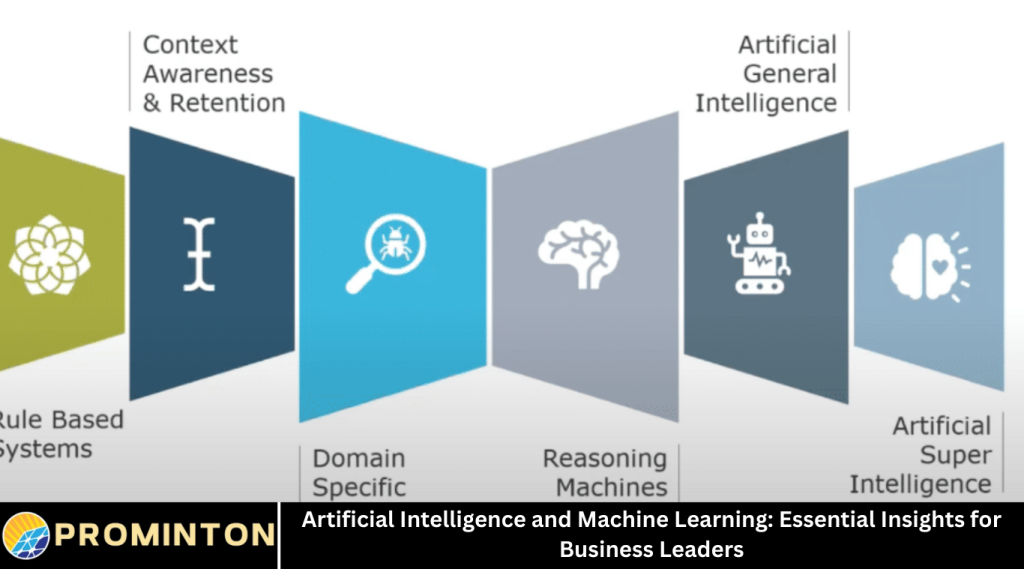Artificial Intelligence (AI) and Machine Learning (ML) are transforming industries and reshaping how businesses operate. For business leaders, understanding these technologies is crucial to staying competitive and making informed decisions. While AI and ML are often used interchangeably, they are distinct concepts with different applications and impacts.
This article explains the differences between AI and ML, explores their benefits and challenges, and highlights how business leaders can harness these technologies effectively. By the end, you will have a clear understanding of what AI and ML mean for your organization and how to strategically leverage them.
What is Artificial Intelligence?
Artificial Intelligence refers to the broad concept of machines or software performing tasks that typically require human intelligence. These tasks include reasoning, learning, problem-solving, understanding language, and perception.
AI aims to create systems capable of mimicking human cognitive functions. It can be categorized into narrow AI, which performs specific tasks like voice recognition, and general AI, which would perform any intellectual task a human can do. Currently, narrow AI is widely used across various industries.
Examples of AI include virtual assistants, chatbots, recommendation systems, and autonomous vehicles. AI systems use data and algorithms to perform tasks and improve over time.
What is Machine Learning?
Machine Learning is a subset of Artificial Intelligence focused on enabling systems to learn from data and improve their performance without explicit programming for each task. ML uses algorithms to identify patterns in data, make decisions, and predict outcomes.
Unlike traditional software that follows fixed instructions, ML models adapt based on new data. This ability to learn and improve makes ML powerful for handling complex problems with large datasets.
Common ML techniques include supervised learning, where models learn from labeled data; unsupervised learning, which finds hidden patterns in unlabeled data; and reinforcement learning, where models learn by trial and error through feedback.
Differences Between Artificial Intelligence and Machine Learning
Understanding the distinction between AI and ML helps business leaders make strategic technology choices.
Artificial Intelligence is the broader concept that encompasses any technique enabling machines to simulate human intelligence. Machine Learning is one approach within AI that focuses specifically on learning from data.
AI includes rule-based systems and symbolic logic, while ML relies on data-driven models and statistical methods.
In summary, all machine learning is AI, but not all AI is machine learning.
Why AI and ML Matter for Business Leaders
AI and ML offer tremendous opportunities for businesses by automating tasks, enhancing decision-making, and enabling innovation.
These technologies can improve efficiency by automating routine operations like customer service or data entry.
They support better decision-making through predictive analytics, identifying trends and risks faster than humans.
AI and ML also enable personalized customer experiences by analyzing behaviors and preferences.
Furthermore, they can unlock new business models and revenue streams by creating smarter products and services.
Key Applications of AI and ML in Business
AI and ML have a wide range of applications across industries. Some common use cases include:
Customer Service: AI-powered chatbots handle inquiries 24/7, providing quick responses and freeing human agents for complex issues.
Sales and Marketing: ML algorithms analyze customer data to segment audiences and optimize campaigns.
Finance: AI detects fraud and automates credit scoring, improving security and efficiency.
Healthcare: Machine learning aids in diagnostics, personalized treatment plans, and drug discovery.
Manufacturing: AI predicts equipment failures and optimizes supply chains to reduce downtime.
Human Resources: AI streamlines recruitment by screening resumes and assessing candidate fit.
These examples show how AI and ML enhance business functions and create competitive advantages.
Challenges and Considerations in Implementing AI and ML
While AI and ML offer benefits, business leaders must be aware of challenges:
Data Quality and Availability: ML models require large amounts of high-quality data. Poor or biased data can lead to inaccurate results.
Skill Gaps: Developing and managing AI solutions needs specialized expertise, which may be scarce or expensive.
Integration Issues: Incorporating AI into existing systems can be complex and require organizational change.
Ethical and Legal Concerns: AI can raise issues related to privacy, bias, transparency, and accountability.
Cost: AI projects can require significant investment in infrastructure, talent, and ongoing maintenance.
Addressing these challenges requires careful planning, cross-functional collaboration, and a clear strategy.
How Business Leaders Can Successfully Adopt AI and ML
To leverage AI and ML effectively, business leaders should focus on several key areas:
Define Clear Objectives: Identify specific business problems or opportunities where AI can add value.
Build Cross-Functional Teams: Combine business, technical, and domain expertise to design and implement solutions.
Invest in Data Strategy: Ensure data is collected, stored, and managed in a way that supports AI initiatives.
Start Small and Scale: Begin with pilot projects to test concepts and demonstrate value before expanding.
Focus on Change Management: Prepare the organization for new workflows and ways of working enabled by AI.
Partner with Experts: Collaborate with technology providers or consultants to access specialized knowledge.
Maintain Ethical Standards: Develop guidelines to ensure AI is used responsibly and fairly.
Future Trends in AI and Machine Learning for Business
AI and ML continue to evolve rapidly, and staying informed about trends can help business leaders anticipate changes:
Explainable AI: Increasing demand for transparency will lead to AI systems that clearly explain their decisions.
Edge AI: Processing AI algorithms locally on devices rather than centralized servers will improve speed and privacy.
Automation and Augmentation: AI will increasingly automate routine tasks while augmenting human decision-making.
AI in Cybersecurity: Machine learning will play a bigger role in detecting and responding to cyber threats.
Industry-Specific AI Solutions: Tailored AI applications will become more common, addressing unique industry needs.
Sustainability and AI: AI will help organizations reduce environmental impact through smarter resource management.
Understanding these trends allows businesses to plan for long-term AI adoption.
Frequently Asked Questions
What is the difference between Artificial Intelligence and Machine Learning?
Artificial Intelligence is a broad field focused on creating machines that mimic human intelligence. Machine Learning is a subset of AI that involves training algorithms to learn from data and improve over time.
How can AI and ML benefit businesses?
They can automate routine tasks, provide predictive insights, personalize customer experiences, and enable new products and services, leading to increased efficiency and innovation.
What industries use AI and ML the most?
Industries such as finance, healthcare, manufacturing, retail, and customer service widely adopt AI and ML technologies.
What challenges do businesses face when implementing AI?
Common challenges include data quality issues, lack of skilled personnel, integration complexities, ethical concerns, and high costs.
How should business leaders start adopting AI and ML?
Begin with clear objectives, pilot projects, invest in data management, build cross-functional teams, and focus on change management and ethics.
What is Explainable AI?
Explainable AI refers to AI systems designed to make their decision-making process transparent and understandable to humans.
Will AI replace human jobs?
AI may automate certain repetitive tasks but is more likely to augment human work by handling routine activities, allowing people to focus on complex and creative tasks.
Conclusion
Artificial Intelligence and Machine Learning are powerful technologies reshaping the business landscape. For business leaders, understanding the difference between AI and ML and their practical applications is essential to making informed decisions.
AI offers broad capabilities to simulate human intelligence, while ML provides data-driven learning to improve systems over time. Together, they unlock new opportunities to improve efficiency, innovate products, and enhance customer experiences.



